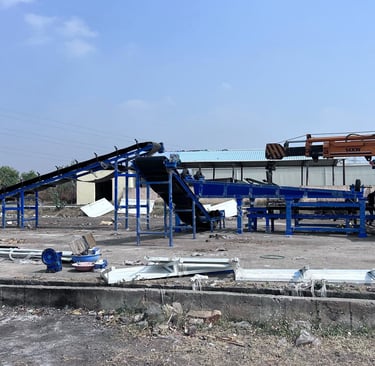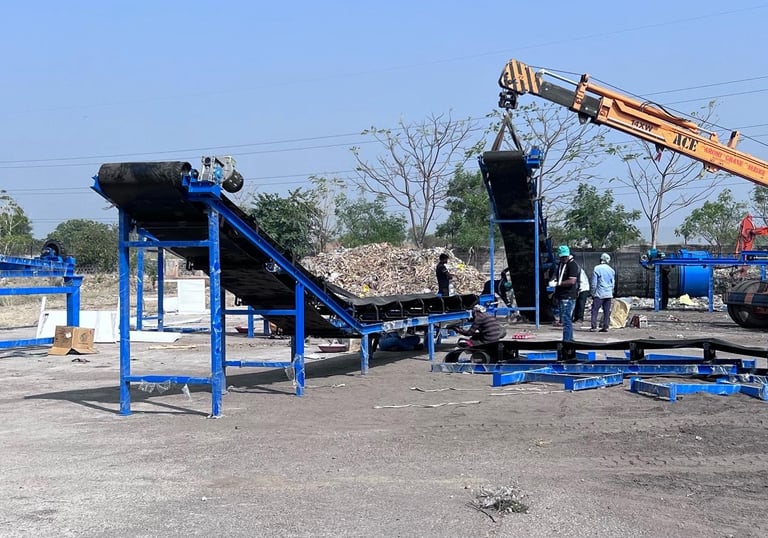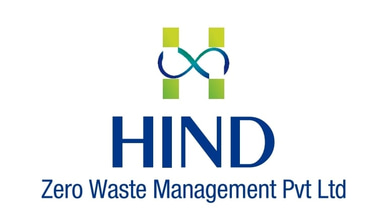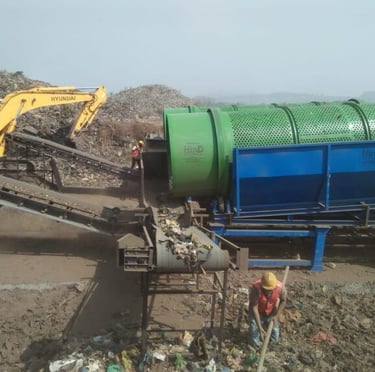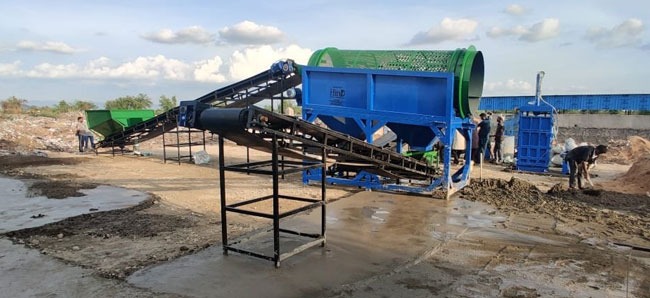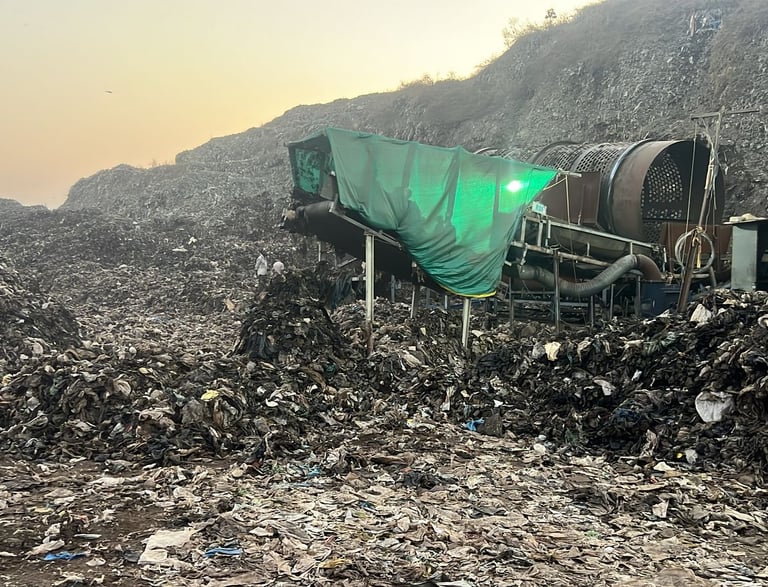What is Legacy Waste?
Legacy waste refers to old, unmanaged waste accumulated at open dumpsites and landfills. This includes decomposed organic matter, plastic waste, construction debris, and inert materials. Without proper management, these sites become sources of soil, air, and groundwater pollution.
Our Bio-Mining Process: Step-by-Step
1. Site Survey & Waste Characterization
We start with a comprehensive assessment using GIS mapping, drone surveys, and lab analysis to evaluate the waste composition and land condition.
2. Excavation & Mechanical Segregation
Using heavy-duty equipment, we excavate and process the waste. Trommel screens, air density separators, and magnetic separators are used to recover recyclables and segregate waste streams.
3. Biological Treatment (Composting)
Organic waste is treated with bio-cultures and enzymes, accelerating decomposition. This produces pathogen-free, odorless organic compost, ideal for agriculture and landscaping.
4. Resource Recovery
Recyclable Materials: Metals, plastics, and glass are diverted to recycling facilities.
Compost: High-quality organic manure is created from biodegradable matter.
Refuse-Derived Fuel (RDF): Non-recyclables are converted to fuel for cement kilns and waste-to-energy plants.
Inert Materials: Used in road construction and landfill capping.
5. Land Reclamation & Site Restoration
Once cleaned, the site can be used for infrastructure development, urban parks, or green zones, contributing to urban regeneration.
Benefits of Bio-Mining Legacy Waste
Eliminates legacy dumpsites and associated environmental hazards
Recovers valuable urban land
Supports sustainable urban planning and clean city initiatives
Promotes circular economy and green job creation
Reduces greenhouse gas emissions and carbon footprint

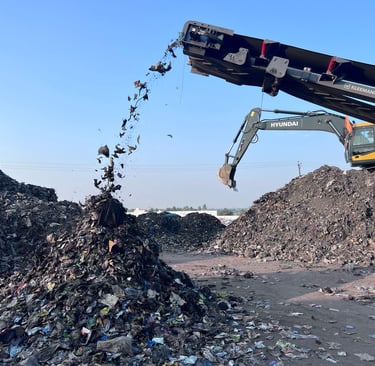
Gallery
Explore our bio-mining legacy waste plant and innovative solutions.

